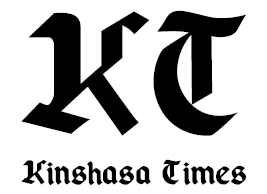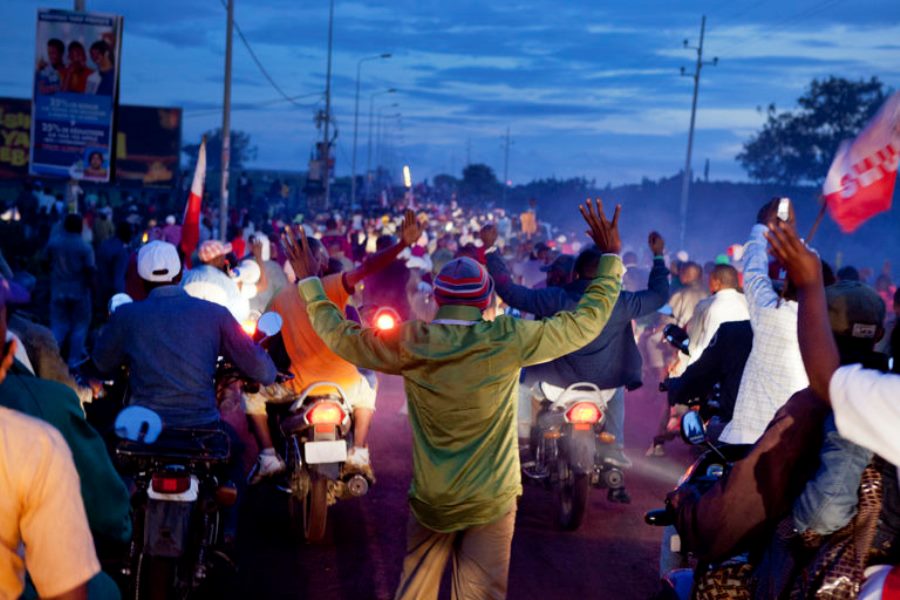This opinion piece was initially written for African Arguments by Kris Berwouts, an independent analyst and consultant on conflict, security and democracy in Central Africa. The thorough analysis provides a profound understanding of the DRC fragmented political landscape.
The Democratic Republic of Congo’s (DRC) political landscape is highly fragmented. Both the ruling majority and the opposition are deeply divided, and the boundaries between the two have become increasingly blurred.
Key individuals and parties have left the ruling coalition the join the opposition in recent years. Meanwhile, after each round of political negotiations since 2013, members of the opposition have crossed the aisle to participate in government.
As it stands, there are countless groupings, individuals and factions that make up the DRC’s political picture, which is highly fluid, complex and sometimes contradictory. Below is an attempt to clarify some of the divisions within both the government and the opposition.
The government
In the last couple of years, the Congo has descended into a political and constitutional crisis. Elections were meant to be held last year to elect a successor for President Joseph Kabila, whose official mandate ended in December 2016. But the vote was delayed, leading to popular anger and protests, and Kabila remains in office to today.
As this crisis has unfolded, there have been attempts at dialogue between the ruling majority and opposition to agree on a way forwards. But ironically, efforts to bring different political actors together have created new divisions.
The four pro-government groups:
Currently, there appear to be four main groups within the government side.
The majorité présidentielle: The official ruling coalition consists of a large group of parties. This has diminished in recent years, however, as some have abandoned the presidential majority. Seven parties left to form the so-called G7 in early-2015 and more are expected to follow. Furthermore, some within the majorité présidentielle are believed to have discretely created parties that they may join if they decide to defect.
The opposition républicaine: Led by Speaker of the Senate Kengo wa Dondo, this group came into government following the National Dialogue in Sept/Oct 2013, which was aimed at restoring national cohesion. The MLC-Libéral party led by Thomas Luhaka is part of this group.
Other former opposition figures: This includes members of the opposition that participated in the 2013 National Dialogue. It includes those such as Vital Kamerhe, a former Kabila ally, who agreed to the 31 December 2016 deal in which the ruling majority and opposition agreed elections would be held in 2017, after which Kabila would step down. It also includes some who did not sign that deal but have joined government since, such as Samy Badibanga, who was appointed Prime Minister from November 2016 to April 2017.
« Loyal » civil society: The exact composition of this group is unclear. But one of the most visible personalities is former minister of human rights Marie-Madeleine Kalala.
The two camps within the pro-Kabila camp
Those in the pro-Kabila camp can be broken down into two camps with differing visions.
The first camp wants to keep the presidency close. Some believe, for divergent reasons, this can only happen with Kabila as leader. Others argue a dauphin is needed, but the taboo question is who that will be. The two people who seem most likely (at least during our visit this March) are Speaker of Parliament Aubin Minaku and former Prime Minister Augustin Matata, with Matata slightly ahead. Either way, insiders believe that if Kabila decides he needs a dauphin, he will wait until the last moment to name them.
The second camp believes remaining in power will be difficult to do with Kabila or one of his acolytes at the helm. They argue that a more credible leader is needed and look to those who have left the presidential camp in recent years. The two leading options are former governor of Katanga Moïse Katumbi and Vital Kamerhe. At the moment, a rapprochement between the ruling majority and Kamerhe seems much more realistic than with Katumbi.
Two reasons the government might want to accelerate the electoral process
There are two scenarios which would encourage the government to accelerate the electoral process.
If the regime reaches a consensus around a dauphin candidate, it will have a clear interest to push towards elections since it has the money and structures to dominate the political space and win them.
If it becomes clear that choosing a dauphin will divide the government, the only remaining strategy may be for Kabila to continue. In this scenario, the regime may allow voter registration to complete and then push through constitutional referendum at short notice to remove the two-term limit.
The opposition
Things are similarly fragmented and complex on the opposition side.
Three strategic alliances
There are three strategic alliances that constitute the critical opposition to the regime.
The Rassemblement: This opposition coalition includes the main opposition UDPS party and the G7 as well as other important politicians such as Martin Fayulu and Freddy Matungulu.
The Front pour le Respect de la Constitution: Led by Eve Bazaiba, this is a political platform of the Jean-Pierre Bemba’s Movement for the Liberation of the Congo (MLC), a rebel movement turned opposition party.
Critical civil society: Of the various groups this includes, the Nouvelle Société Civile led by Jonas Thsiombela is the best known and most visible.
[Lucha continua: The youth movement striking fear into Congo’s elite]
[Congo Come Back! Why we’re building a new political movement in DRC]
Three political families within the opposition
One can also distinguish three political families within the opposition, which could provide the drive and personnel to challenge Kabila.
A divided MLC: In the weeks ahead of the International Criminal Court’s verdict on MLC founder Jean-Pierre Bemba, the shadow of the former vice-president could be felt across Kinshasa. Bemba maintains some street credibility among the angry youth of the city, but his conviction and 18-year sentence keeps him away from the DRC. What remains of his MLC party has been divided since the government of national cohesion formed in December 2014. At that time, Eve Bazaiba, who leads Bemba’s faction, chose to remain outside government. By contrast, Thomas Luhaka, who now leads the other faction, MLC-Libéral, was appointed vice-prime minister.
UDPS: The main opposition party is suffering from the death of leader Etienne Tshisekedi this February. The veteran’s return to politics in 2016 had put him back on the map. His initiative to invite the entire opposition to Belgium in June and his unexpected return to Kinshasa in July reaffirmed his leadership. His death has led to confusion amongst a considerable portion of the party’s base. The government is highly capable of exploiting these internal divisions. The appointment of party member Samy Badibanga as PM in November 2016 was a masterstroke in this regard. And the nomination of Bruno Tshibala, who had recently left the UPDS, as his successor has further contributed to the party’s inner turmoil.
Kabila’s former allies: Following the reasonably free and fair elections in 2006, many saw Congo’s embryonic democracy as promising. Part of this optimism came from the fact that the government included individuals seen to have democratic potential such as: Vital Kamerhe, Olivier Kamitatu, Pierre Lumbi, Abbé Malumalu, Moïse Katumbi, Christophe Lutundula and Charles Mwando Simba. These figures have all left the regime, from Kamerhe in 2010, to Katumbi and other G7 leaders in 2015. Katumbi seemed to be the obvious candidate to challenge Kabila for a while. But his departure from Congo after a trial in early-2016 and the break-up of Katanga, the province he governed for eight years, into smaller units – thus weakening Katangese identity – have weakened his position.
The ultimate challenger
Since the Saint Sylvester Agreement was signed on 31 December, Congo has entered a new transition, the contours of which have not yet been clearly defined. The deal was an important achievement, but it is already clear that the deadline for elections in 2017 will not be respected due to technical and financial reasons as well as a lack of political will.
The Congo’s complex situation contains many participants, but the one most crucial player remains Kabila. The president, through his silence and refusal to take decisions or draw clear lines, is responsible for the political situation the country has found itself in since 2014.
Congo is now caught between two unlikely events: that Kabila will be able to impose himself and remain president under a new mandate; or that he will organise elections in which he will not participate.
His main struggle is not so much with his challengers in 2006 or 2011, but with the democratic potential of his own electoral victory in 2006. The axis of Vital Kamerhe, Moise Katumbi, and the other G7 leaders could become the backbone of political change. Between them, this group has the capacity to make alliances with both key players in the traditional opposition and important leaders that are still part of the presidential majority.
Away from the ongoing implosion of UDPS and in the absence of the late Tshisekedi, there is now new space for political coherence to emerge within the opposition.


